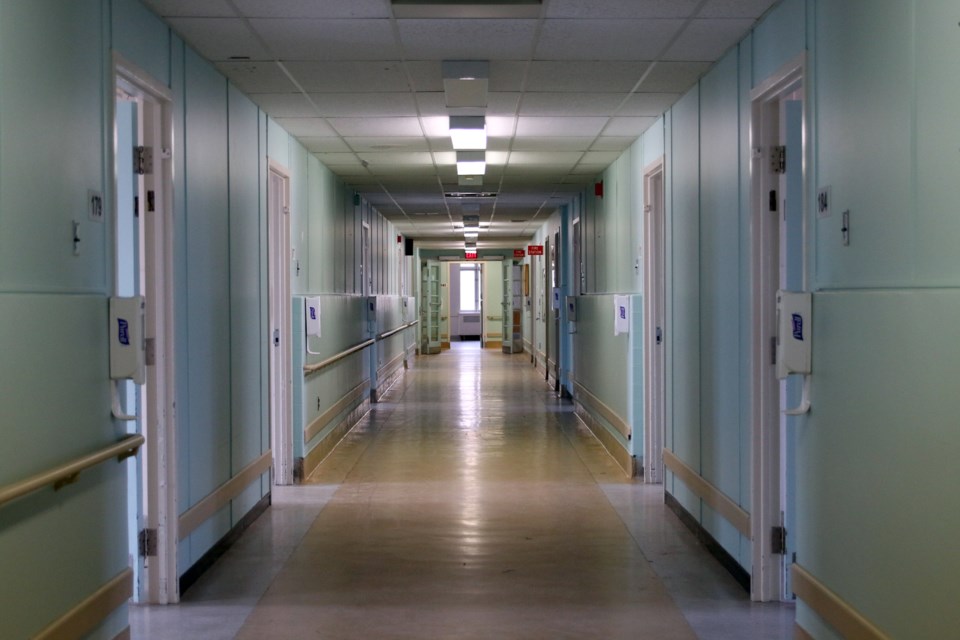THUNDER BAY - The Lakehead Psychiatric Hospital, a sprawling 500,000 square foot facility that has been providing mental health services for the last 70 years, will soon be empty. And while the building once represented the method of care available, the transition out of the historic space reflects how care for and perceptions of mental health have changed.
“It was designed at a time when we needed a big facility and a big facade to keep people safe but also for the public to have a sense they are safe from people who are psychiatrically ill,” said Janet Sillman, vice president of addictions and mental health with St. Joseph’s Care Group.
“The care has changed dramatically.”
That change in care will be reflected in the new East Wing at the St. Joseph’s Hospital. With construction nearly complete, 38 of the 40 patients currently at the LPH will be transferred to the new facility starting at the end of May, with the two remaining patients being discharged with supports.
Construction began on the East Wing in June 2015. The 100,000 square foot facility has 38 private rehabilitation rooms and administration space. According to Dr. Jack Haggarty, a psychiatrist and senior medical director of addictions and mental health with St. Joseph’s Care Group, the East Wing represents a movement toward community care rather than institutional care.
“It changes from a custodial model of care and we want to see as many people moving towards independence as much as they are able to,” he said. “This is a progression of the delivery of mental health services in Northwestern Ontario. It’s a plan that has been in the works for 20 plus years.”
Clients will be provided with opportunities to gain more independence and be active participants in care plans. St. Joseph’s Care Group CEO, Tracy Buckler, said the move reflects a far-less institutionalized environment and provides “a more home like setting so clients can think about their rehab goals.”
Brenda Mason, who provides cultural and spiritual services at the St. Joseph’s Care Group mental health outreach program, said the LPH itself could actually deter people from seeking treatment.
“I think what I can say from a client’s perspective and what I’ve heard from them, when they come to a community health centre as a mental health outpatient program, I think it reduces the stigma they experience when they come to the LPH,” she said. “A good many people were not. They recognize that the help they needed and they needed to come here for that particular help, especially for mental illness.”
Changes in mental health and addictions care
At its peak, the LPH had space for 1,000 beds. During that time, care was very limited for people living with a mental illness.
“It was more to provide a supportive environment for individuals,” Sillman said. “Mostly when they came here, it was to support them and care for them.”
Care focused primarily on keeping individuals safe from harming themselves or harming others. However, advances in medication have changed how patients with a mental illness are treated.
“Medication really helped them and helped the care providers support individuals to achieve more of their potential because the medication dealt with the chemical imbalances that were in their systems and in their brains,” Sillman said.
As the care model changed, patients began to be discharged back into the community in the early 1960’s into residential homes or individual homes.
When St. Joseph’s Care Group began utilizing the LPH in 2003, there were more than 120 clients receiving care at the facility. Over the last 18 years, outpatient care models have evolved and many patients have been discharged.
“People are always worried that when we discharge people from hospital, we are discharging them into the community,” Sillman said. “But that is not the case. When they are ready for discharge, they are supported in the community.”
These supports can include support housing, outpatient programming, and continued counselling and consultation.
The future of the LPH is uncertain. When the move is complete, St. Joseph’s Care Group will hand the lease back to Infrastructure Ontario, who owns the facility, and it will determine what happens to the building.
“When you are operating two wings with 40 clients, it certainly is expensive to run lights and heat and all the operating expenses that go with a large building,” Buckler said.
And as the last clients and staff move out of the LPH this month, they are not just leaving behind an aging building, but also a model of care for the mentally ill.
“For us, we need to think differently how we provide care, how we work with clients,” Sillman said. “The world has changed where clients are now leaders in their care. We ask them the goals they would like to accomplish.”
